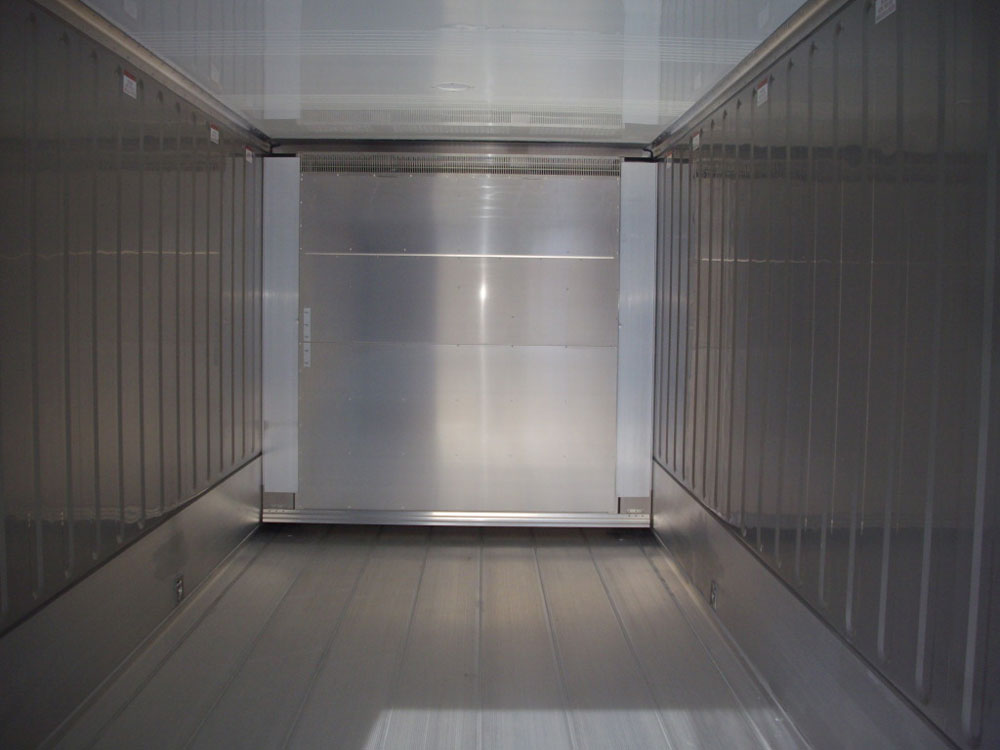Who would’ve thought that those big, industrial shipping containers could be so versatile? Modified shipping containers can be redesigned to suit all sorts of needs and purposes. There’s a wide selection of refrigerated containers for sale, perfect for transporting your perishable goods safely. You’ll also want to ensure that the container is well-insulated and has a reliable cooling system.
Shipping containers come in all shapes and sizes, but there are a few best practices for packing refrigerated shipping containers to ensure your goods stay cool during transit. Consider the refrigerated shipping container dimensions – you want to leave enough space for air circulation around your goods.
If you’re in the business of shipping refrigerated goods transportation, then you know that refrigerated shipping container maintenance is very important, and a proper temperature is a key to ensuring your products arrive in the same condition they left in. Perishable goods need to be transported carefully. They need to be kept cool and out of the sun. But as long as they’re handled with care, they’ll get where they’re going safely.
Refrigerated shipping containers can be hired from a variety of different companies, so it’s important to shop around and compare prices before making a decision. Here are some best practices when it comes to packing your refrigerated shipping container:
1. Before you pack up your perishable goods for shipment, there’s one important thing to remember: your refrigerated shipping container must be clean and dry. If there’s any moisture lurking in the container, it can lead to condensation, and that’s bad news for your products. Condensation can damage delicate items, and it can also create an ideal environment for mould and bacteria to thrive. So before you load up your shipping container, ensure it’s clean and dry – otherwise, you might be in for a nasty surprise.
2. If you’re planning on packing up your perishables and sending them off across the country, there’s one important step you can’t forget: inspecting the seals on your shipping container. Cracks or gaps in the seals of your container could mean big trouble for your big shipment. Check those seals before you load up the truck, and make sure your goods arrive at their destination nice and fresh.
3. Pack your products in an orderly fashion so they’re not touching each other or the sides of the container. This will help air flow and prevent spoilage.
4. Whether you’re packing produce for market or meat for the freezer, proper airflow is essential to keeping your goods fresh. That’s why it’s important to pack your products in an orderly fashion, ensuring that they’re not touching each other or the sides of the container. This will help ensure that air can circulate freely, keeping your products fresh for longer. So next time you’re packing your goods, remember: order is key!
By following these simple tips, you can help ensure that your refrigerated shipping containers are correctly packed, and your products arrive at their destination in perfect condition.

1. Site Selection
If you are not mounting the container for the long term, choose a spot where the ground is even and the soil firm and compacted so that it will support the frame of the container. If your site is rough or slanted you can add a layer of gravel or small stones to keep the container stable and secure.
2. Surroundings
If your container is going to remain in place for a length of time, it can be valuable to pave the surrounding area prior to installation. This will provide a solid firm base for your structure and will enable you to utilise the outer area of the container more easily.
3. Vehicle Access
If your site is in a position behind other buildings then you may have trouble getting your container to your site. There are options to have your container dropped in situ’ by a crane but this is expensive. If your site is accessible by vehicle you will keep delivery costs down. Setting up storage containers in Sydney, where the topography varies, it is a great idea to prepare a level area prior to delivery.
4. Weather conditions
It is ideal to have your container delivered on a day free of rain, after a dry spell. Installing your container directly onto sodden earth may lead to sinkage and misalignment of your final structure. If you are in a particularly rough area you may need to secure your shipping container to the ground, but in most circumstances, the natural weight of the container will hold it firmly in place.
5. Ventilation
If you are concerned about water or drainage around the site of your container then it may be worthwhile setting the container down on concrete blocks. This will keep it raised from ground level, free of moisture and well ventilated.
Betta Storage are your local Sydney specialists in movable new and used storage containers. Contact us to discuss your requirements and let us help you choose the right container for your needs.

